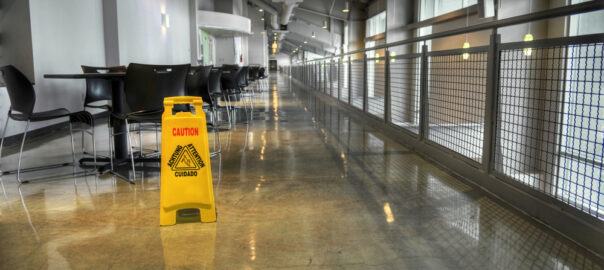6 Ways To Prevent Slip And Fall Accidents

Premises Liability Lawyer
As a premises liability lawyer wants victims and property owners to know, slip and fall accidents can happen anywhere and anytime. While victims of these accidents must take prompt action to report the accident and seek treatment, property owners should always take action to prevent these accidents from happening. Property owners and building managers can protect their visitors and residents and minimize their liability in case of an accident. Our team shares practical ways to prevent slip and fall accidents on your property:
Maintain Proper Lighting
When properties do not have proper lighting, these areas can contribute to slips, trips, and falls, as people are less likely to notice potential hazards. Property owners should ensure that all walkways, stairs, and other high-traffic areas are well-lit indoors and outdoors. Replace any burnt-out bulbs promptly and consider installing motion-sensor lighting to improve visibility in low-traffic areas.
Regular Inspections and Repairs
Property owners should regularly inspect their property to identify hazards such as uneven flooring, broken steps, or loose handrails. Repairing these issues as soon as possible is critical to minimize the risk of accidents. Regular maintenance also helps to stay on top of any new hazards that might emerge over time.
Remove Obstacles and Clutter
Always ensure walkways, hallways, and other common areas are free from clutter and obstacles. This may include loose cords, boxes, or other items that could cause someone to trip and fall. Remove snow and ice from walkways during the winter months and promptly clean up any spills or wet areas that could cause slipping.
Install Non-Slip Flooring
Investing in slip-resistant flooring materials for high-traffic areas, particularly in wet or slippery zones such as entryways, restrooms, and kitchens, can help prevent slips. Property owners should also install non-slip mats or area rugs to provide additional traction, but ensure they are secured to the floor and do not present a tripping hazard.
Provide Adequate Signage
Mark any potential hazards on your property with appropriate and clear signage. For example, use “Wet Floor” signs when mopping or after spills, and warn of uneven surfaces or steps with proper signage. This can help alert visitors to be cautious and avoid hazardous areas.
Regular Housekeeping and Cleaning
Establish a consistent cleaning schedule for your property to ensure that floors and walkways remain free from spills, debris, and other hazards. Regularly sweep, mop, and vacuum, and use appropriate cleaning solutions that will not leave a slippery residue.
Install Proper Handrails
Handrails should be installed on all staircases and ramps, providing additional support and stability for individuals navigating these areas. Make sure handrails are securely mounted and extend the entire length of the stairs or ramp.
Ensure Proper Drainage
Water accumulation can create slippery surfaces and lead to falls. Ensure your property has a proper drainage system to prevent pooling water, particularly in areas prone to heavy foot traffic or where water is frequently used, such as restrooms and kitchens.
Educate Employees and Tenants
Educate your employees and tenants about the importance of slip and fall prevention by encouraging them to report any hazards and keep common areas clean and free from clutter. Providing safety training and establishing a safety-conscious culture can go a long way in preventing accidents.
Document Efforts
Keep records of all safety and maintenance efforts, including inspection reports, repair records, and cleaning schedules. This documentation demonstrates that property owners or building managers have taken reasonable precautions to prevent slip and fall accidents on your property.
Slip and fall accidents are preventable with proactive measures and a commitment to safety. By implementing these strategies; it’s possible to create a safer environment for everyone on the property and reduce the likelihood of accidents and injuries.
